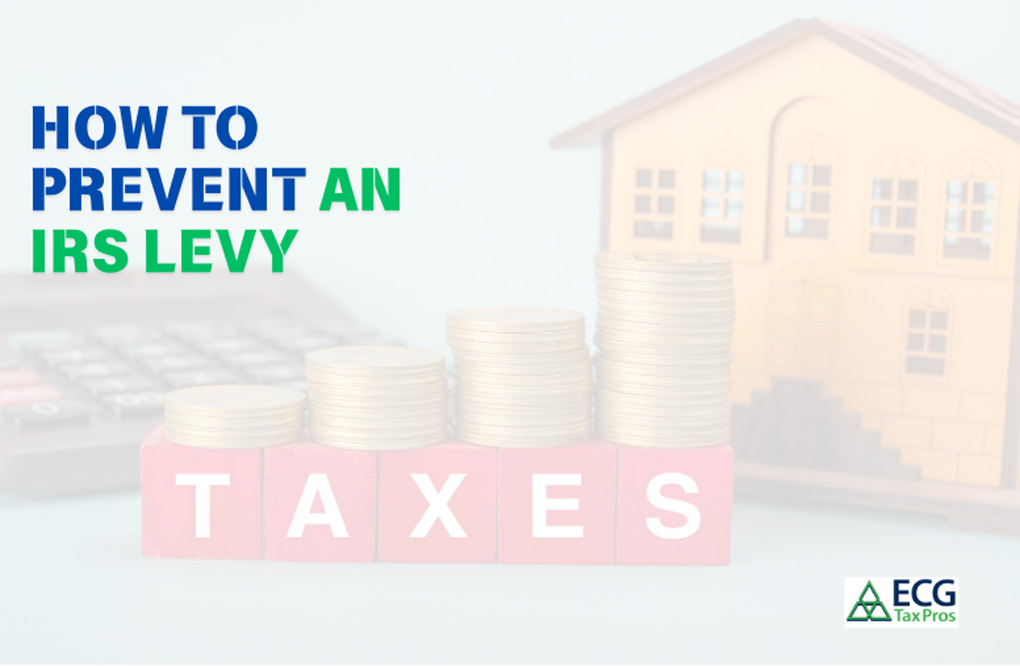October 30, 2024
What is an IRS Levy?
An IRS levy is one of the most drastic measures the IRS uses to collect overdue taxes. Unlike a lien, which places a claim on property, a levy allows the IRS to seize assets like wages, bank balances, and other valuables to cover tax debt. If you’re facing a levy, it’s essential to understand your options and act quickly to protect your financial stability.

How IRS Levies Work
An IRS levy is a legal process that allows the IRS to collect tax debt by seizing assets, which can include:
- Wage Garnishments: Reducing your income to just enough for basic expenses.
- Bank Account Freezes: Potentially draining funds without notice.
- Seizure of Property: In extreme cases, the IRS may claim vehicles, real estate, or other valuables.
The IRS typically initiates a levy after repeated collection attempts, such as sending letters, making calls, or issuing notices. Before enforcing a levy, they send a “Final Notice of Intent to Levy” (IRS Notice CP504 or LT11), giving the taxpayer 30 days to address the debt.
Options to Stop an IRS Levy
Facing an IRS levy can be financially draining, but there are ways to stop it. Here are the main strategies:
- Pay the Full Tax Debt: The quickest way to stop a levy is to pay off the debt completely, immediately ending collection actions. However, this may not be feasible for everyone.
- Set Up an Installment Agreement: If paying in full isn’t possible, an Installment Agreement allows you to make monthly payments toward the debt. With an agreement in place, levies are usually suspended. Types of Installment Agreements include:
- Guaranteed Installment Agreement: For debts under $10,000, with specific eligibility criteria.
- Streamlined Installment Agreement: Available for debts under $50,000, allowing up to 72 months for repayment.
- Non-Streamlined Installment Agreement: For debts over $50,000, requiring additional financial documentation.
- Partial Payment Installment Agreement (PPIA): Allows for reduced payments based on financial capacity.
- Submit an Offer in Compromise (OIC): Part of the IRS Fresh Start program, this option lets you settle for less than the full debt amount if full payment would cause undue hardship. Collections, including levies, are paused while the IRS reviews the offer. Only a small percentage of these applications are approved, and they require thorough financial documentation.
Other Methods to Stop an IRS Levy
- Request a Collection Due Process (CDP) Hearing: After receiving a Final Notice, you have 30 days to request a CDP hearing. This temporary halt provides an opportunity to negotiate payment arrangements or explore other options like an Offer in Compromise.
- Show Financial Hardship: If a levy results in severe financial hardship, you may qualify for “Currently Not Collectible” (CNC) status, pausing collection actions while penalties and interest continue to accumulate.
- Consider Bankruptcy: As a last resort, filing for bankruptcy can halt IRS collections, including levies, due to an automatic stay. Some older tax debts might even be discharged depending on the type of bankruptcy.
Preventing Future IRS Levies
After resolving a levy, staying proactive can help avoid similar issues in the future. Key actions include:
- Filing tax returns on time to avoid penalties and demonstrate compliance.
- Making partial payments if full payment isn’t possible to show good faith.
- Consulting a tax professional for guidance, especially when negotiating with the IRS.
- Seeking Tax Assistance
An IRS levy can be overwhelming, but options like payment plans, settlement offers, and legal actions provide ways to regain financial control. Acting swiftly, staying informed, and seeking professional guidance can help you navigate IRS collections and protect your assets.
If you need tax help, contact us today for a Free Consultation




